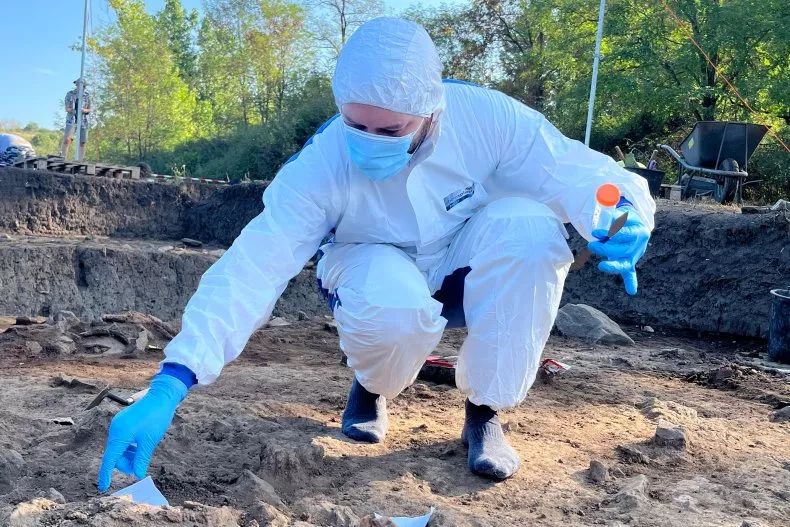In a significant archaeological revelation, researchers have uncovered the remains of a prehistoric house in southern Serbia, approximately 8,000 years old.
This site, located in Svinjarička Čuka, offers a rare glimpse into the early sedentary societies of Europe, particularly those in the Balkans region.

The site was excavated by experts from the Austrian Academy of Sciences, with the building’s remarkable preservation attributed to its destruction by fire.
Constructed using wattle and reinforced with wooden posts, the remnants of the structure have provided researchers with valuable insights into the lifestyle and architecture of early Neolithic communities.
This new discovery holds significant implications for our understanding of European settlement development.
Previously, it was thought that early inhabitants of the region were mainly nomadic or settled only temporarily.

However, the findings at Svinjarička Čuka indicate that these Neolithic pioneers constructed more permanent dwellings, complete with facilities for storing grains and seeds.
The presence of tools and scattered vessels further supports the theory that the inhabitants practiced a form of agriculture.
This challenges earlier models and opens up new perspectives on the spread of Neolithic innovations, such as agriculture, across the Balkans and into Europe from the Anatolian region.
Ongoing excavations in the area commenced in 2018 and have revealed multiple occupation phases from the Early to Middle Neolithic periods.
Archeologists suggest that the site is associated with the Starčevo culture, one of the earliest known Neolithic cultures in Serbia and the Balkans, responsible for introducing both agricultural practices and the domestication of animals in the region.
Beyond the architectural findings, researchers are employing micro-archaeological methods to further analyze the site.
This includes studying sediment samples, botanical and zoological remains, and conducting chemical soil analyses to better understand the environment and lifestyle of these early societies.
Contributions from the site at Svinjarička Čuka extend beyond the architectural to cultural exchanges and trade connections between ancient communities.
It reveals complex social dynamics and connections that played a crucial role in shaping early European societies.
This latest research project is supported by the Austrian Science Fund FWF, with further backing from the ÖAW, the Agency for Education and Internationalization OeAD, and the Federal Ministry for European and International Affairs.
The groundbreaking discovery at Svinjarička Čuka not only reshapes our understanding of Europe’s early agricultural pioneers but also highlights the complex social structures that emerged during this transformative period in human history.
